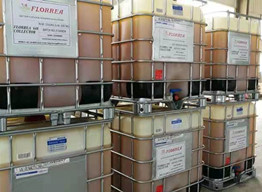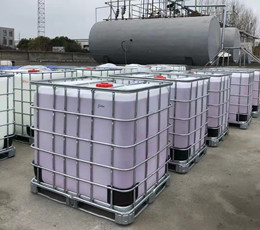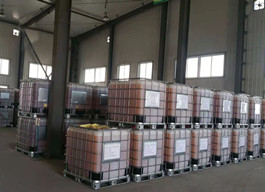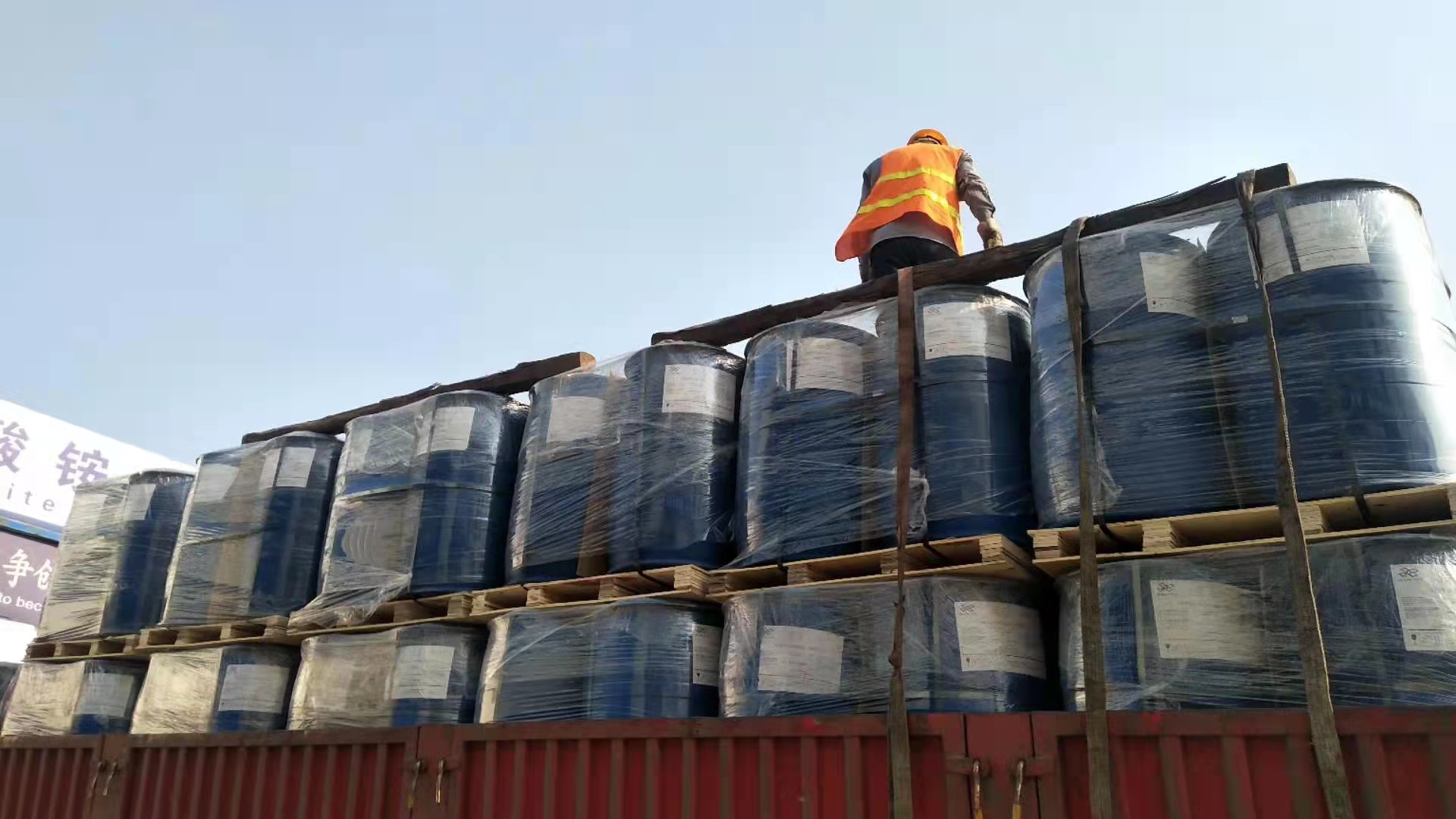
Xanthate Replacement
Xanthate replacement Collectors.
Florrea ECOXANTHATEⓇ series mining chemicals are new effective flotation collectors replacing xanthate in sulphide flotation which is one of the key beneficiation methods for mineral processing . Due to the hazardous classification of xanthate collectors and difficulties with storage......
Florrea ECOXANTHATEⓇ COLLECTORS
Xanthate Replacement Collectors
SAFER, BETTER PERFORMANCE ECO-FRIENDLY COLLECTORS AS ALTERNATIVE TO XANTHATES
Florrea ECOXANTHATEⓇ series mining chemicals are new effective flotation collectors replacing xanthate in sulfide flotation which is one of the key beneficiation methods for mineral processing .
Due to the hazardous classification of xanthate collectors and difficulties with storage, handling and disposal, sulfide mining companies are facing increasingly difficult xanthate logistics challenge
Addressing long lasting xanthate PROBLEMS and CHALLENGES of Safety Health and Environmental (SHE),Florrea offers solutions and xanthate replacement series collectors ECOXANTHATEⓇ to achieve outstanding sustainability advantages over xanthate and replace xanthate to value servicing global mining industry.
ECOXANTHATEⓇ has undergone a systematic, in-depth screening process using Safety Health and Environmental (SHE) and metallurgical criteria in all three sustainability dimensions: social, environmental and economic.
R & D and Services Team Work
Florrea strong global technical teams work together designing and manufacturing sustainable ECOXANTHATEⓇseries eco-friendly flotation collectors to replace traditional hazardous xanthates through Florrea's in-depth lab development trials ,industrial applications expertise ,constant technical training and mine site services.
Application
ECOXANTHATEⓇ collectors are used mainly for sulphide ore flotation for the recovery of base and precious metals , such as copper, lead,zinc,molybdenum, gold, nickel, cobalt, platinum group metals ,polymetallics, pyrite and also good for oxide copper ores etc.
Benefits
Florrea position itself as problem solvers, innovators and practice solution-seekers committed to addressing our customers' wide range of challenges.
The new ECOXANTHATEⓇ flotation promoters has brought the mining industry with two benefits:
Benefit 1: SAFER FLOTATION COLLECTORS
→ Challenges and Problems by Xanthate
Xanthates are self combustible, self-ignite/explode, and release toxic gases such as CS2, COS, etc. during storage, shipment and usage and had serious Safety Health and Environmental (SHE)problems.
Warehousing of solid xanthates in mine site is of potential fire accidents because one of the raw materials CS2(Carbon disulfide )in xanthate production can not be reacted 100%.
CS2 come from two sources: residual in xanthate production and decomposed in xanthate when in heat temperature and expose.
CS2 is the ROOT cause of fire accidents especially in sea shipments and mine site warehousing and storage.
Xanthate are usually supplied in powder or pellet forms and are readily soluble in water, and can be made up to any strength for convenience in dosing.
Xanthate solutions have relatively poor long-term stability and, therefore, are supplied in liquid form only when the manufacturing plant is in close proximity to the use location.
However even liquid xanthate still has CS2 residual inside and still self combustible.
Mining industry has been facing with a growing number of critical xanthate safety issues and xanthate replacement demand is increasing .
Some potential xanthate fire accidents can even cause mines shut down.
→ Florrea Flotation Solutions
ECOXANTHATEⓇ collectors are safer in production, shipment, mine site warehousing , handling and disposal ,and does not cause the SHE concerns associated with xanthates .
More and more world big mining companies are replacing xanthate and change to use Florrea ECOXANTHATEⓇ collectors as its standard flotation reagents for its safety and economic benefits.
The novel solutions and collectors ECOXANTHATEⓇ are liquid products that can be dosed directly to the process, substantially improving:
√ Handling and level of exposure of the personnel to product
√ Stock safety management
√ Residual generation
√ Simplifying the plant operation.
ECOXANTHATEⓇ can be added to different locations within the circuit, and due to its versatility, ECOXANTHATEⓇ is compatible with a wide range of circuit configurations.
Aside from ease of use, ECOXANTHATEⓇ offers an improved toxicity profile, another distinct advantage over competing chemistries such as xanthates.
Florrea ECOXANTHATEⓇ collectors also safer for employees to handle as it does not decompose into byproducts or offgas.
And unlike competing products, ECOXANTHATEⓇ collectors are not considered “dangerous goods” and, therefore, are not subject to Transportation of Dangerous Goods (TDG) requirements. with these benefits:
√ Supplied as a non-flammable liquid
√ Eliminate the exposure potential of a xanthate make-up station
√ Use as a Primary or Secondary collector
√ Delivered in bulk to eliminate packaging disposal
√ Clear, filtered liquids delivered
√ No warehousing needed - liquid tank only
√ No flammable fumes accumulating in dikes and sumps
√ Non-flammable by DOT
√ Stable, water-soluble product that can be diluted with water
Benefit 2: MORE COST EFFECTIVE THAN XANTHATES
→ Challenges and problems of xanthate in flotation and metallurgy
⇒ lack of selectivity against iron sulphide ores and lime has to be used a lot to increase pulp pH value to depress pyrite for keeping concentrate grade.
⇒ not selective against penalty elements and concentrate grade is not qualified by refinery.
⇒ higher pulp pH range results using a lot of lime and cause a lot of trouble to the mine metallurgist.
⇒ New collectors function similar or better than xanthate at neutral and mildly alkaline pH circuit are required.
⇒ precious metals recovery is low and not satisfactory due to too much lime used will depress gold and silver.
⇒ strong unpleasant ordour.
Xanthate is especially widely used for easy-to-treat ores, where selectivity (especially against iron sulfides and penalty elements) is not an issue. To replace xanthate in these applications with eco friendly Florrea ECOXANTHATEⓇ collectors is necessary.
→ Florrea Solutions
ECOXANTHATEⓇ exhibit a metallurgical profile very similar to that of the xanthates and,in some cases is of high flotation performance which can improve recovery of copper, gold, silver for base and precious metal ores including copper ,lead ,zinc ,gold and molybdenum mines etc
The safety, health and environment problems, as mentioned above, prompted Florrea to develop ECOXANTHATEⓇas more sustainable options to replace xanthates while keeping or enhancing these metallurgical benefits:
√ substantial lime savings and provides a considerable reduction in lime costs
√ Improving recovery of precious metals like gold and silver
√ Increase base metals including copper recovery
√ Can be used as primary or secondary collectors and maintain metallurgical result
√ Reduces collector consumption
√ more selective collectors
If you want to replace xanthate in flotation
Please contact Florrea and use ECOXANTHATEⓇxanthate replacement collectors
Xanthate Fire Control
Xanthate-Control of FIRE Risks Associated with Storage/ Use and Florrea Solutions ECOXANTHATEⓇ Collectors as XANTHATE REPLACEMENT
⇒ One of the predominant sulphide flotation collectors used in world sulphide mineral processing is Xanthates whose annual consumption is over 100,000mts and Xanthates were introduced into mining industry 100 years ago .
⇒ Xanthates in both powder /pellet form and liquid form have been used for the collection of sulfide minerals for decades but are classified as fire and explosion hazards.
⇒ They pose health risks, disposal challenges and potentially require additional infrastructure for handling.
⇒ Due to the hazardous classification of xanthate collectors and difficulties with storage, handling and disposal, sulfide mining companies are facing increasingly difficult xanthate logistics challenges.
>>Xanthate Introduction
>>Xanthates properties
>>xanthate fire risk
>>xanthate monitoring
>>Xanthate fire accidents
>>Florrea xanthate replacement ECOXANTHATE collectors solutions
1) Xanthate Introduction
⇒ Xanthate is the common name for chemical reagents used in mining industry for separating valuable minerals, such as gold, copper, lead , zinc and nickel minerals, from non-valuable minerals, such as limestone or quartz.
⇒ Large quantities of various xanthate compounds are widely used in the world especially as flotation reagents in the mining industry for the separation of metal sulfides.
⇒ Common xanthate products are sodium ethyl xanthate (SEX), sodium isopropyl xanthate (SIPX), sodium isobutyl xanthate (SIBX) and potassium amyl xanthate (PAX).
⇒ Prior to use, the selected solid xanthate is mixed with water to form a dilute aqueous solution.
Typically, concentrations in the order of 10% are produced.
⇒ The pH of aqueous solutions typically range from 9 to 12.
⇒ Florrea has standardized on the pelletized form as it has proven to be the most stable to decomposition over time. The surface area is vastly reduced over powdered forms and drying to remove excess CS2 and alcohols is more effective.
⇒ Other producers manufacture xanthates as powders and pellets as well.
Incidences have been recorded in the literature and elsewhere involving fires, explosions, and personnel exposure.
The purpose of this bulletin is to highlight the risks associated with the use and storage of xanthate and to reiterate methods for the control of these risks.
2) Physical and Chemical Characteristics of Xanthates
⇒ Xanthates are delivered to operations as solid pellets in drums, bags, or in liquid form by bulk road tankers, depending on the transport distances and the make-up facilities on-site.
⇒ The color of xanthate pellets range from grey to pale yellowish green or even brown.
⇒ They have a characteristic disagreeable odor due to the presence of small residual quantities of carbon disulfide (<1%) and related alochols.
⇒ Xanthates hydrolyze very rapidly under acidic conditions and is stabilized by high pH (>12) conditions.
⇒ It dissociates totally under pH 9 and very rapidly under pH 7
⇒ Solid xanthates are hygroscopic and decompose in the presence of water to form carbon disulphide, hydrosulphide, carbonyl sulfide, pseudo-xanthate, alcohols, hydroxides, and mono-, di-, and trithiocarbonates.
⇒ Two or more layers will form with very different densities. Care must be taken to sample the top and bottom to determine composition.
⇒ Some of these decomposition products pose risks to health, and may cause explosions and fires.
⇒ Both solid and liquid xanthates pose sizeable occupational risks.
⇒ The risk of exposure increases during mixing stages for solid xanthates, and storage of the liquid product.
⇒ Care must be taken to handle xanthates in any form.
⇒ In addition to inhalation and ingestion hazards, skin contact and absorption of chemicals may lead to irritation, eye damage, nausea, vomiting and even blood contamination.
⇒ SDS’ recommendations for personal protective equipment must be adhered to.
⇒ Liquid xanthates have a limited shelf life and should be kept below 150C if possible. Florrea recommends that solutions be consumed within a prescribed period (30 days) if stored at temperatures above 150C.
⇒ At higher temperatures liquid xanthates show decomposition losing 1-2% activity per week. This rate is even greater at elevated temperatures.
3) Fire Risks etc Associated With Xanthates
WARNING!
⇒ Xanthates are spontaneously combustible. Even with strict drying methods a small concentration of carbon disulfide is present in the product from the time of manufacture and increases with decomposition over time.
⇒ Avoid contact with heat, moist air, and water.
⇒ Xanthate dust or mist may be irritating to nose, throat, and respiratory system.
⇒ Xanthate dust and liquid solutions may cause eye and skin burns.
⇒ Harmful if swallowed.
⇒ Excessive heating or contact with moisture may liberate toxic and flammable carbon disulfide (CS2) and other products identified earlier in this document.
⇒ In addition, xanthates decompose on aging to form a number of byproducts,depending on the pH, temperature, etc.
⇒ Fire and explosion risks associated with xanthate are, therefore, a function of the breakdown of the product or un-reacted raw materials remaining in the product.
⇒ Florrea’s xanthate are dried under vacuum to reduce residual solvents.
⇒ The vapor-space above xanthate solutions should be considered to be a flammable atmosphere.
⇒ Consequently the area in proximity of the vents from storage makeup/day tanks should be treated with the appropriate flammability hazard classification.
⇒ Any work that has the potential of creating sparks or flames must be first monitored for hazardous chemicals and placed under site specific hot work permitting procedures.
⇒ Vent piping must be cleaned preferably with steam or other methods prior to performing hot work.
⇒ Refer to the Florrea specific xanthate MSDS for more detailed information
⇒ The main hazards are from carbon di-sulphide (CS2), alcohols, and sodium/potassium hydroxide.
⇒ Hydrogen sulfide (HS not H2S) is also a decomposition product that may pose similar risks as H2S.
Carbon Di-sulphide Fire CS2 is both a reagent in the manufacture, as well as a decomposition product of xanthates.
⇒ It has an extremely low flash point (-27oC) and will start to burn with a spark or even a hot surface in the presence of oxygen.
⇒ CS2 has an auto-ignition temperature of 90-95°C.
⇒ This means that even a steam trap can cause ignition.
⇒ It is heavier than air and therefore tends to travel long distances along the ground and collect in low lying areas.
⇒ CS2 is relatively insoluble in water and heavier than water and, therefore, it will collect in a layer under water.
⇒ Spills or CS2 fires in containment areas are therefore easier to manage by the use of water.
In other areas the use of water to extinguish CS2 fires may lead to spreading of the fire along the water run-off routes.
Refer to MSDS’ for CS2 to determine proper fire fighting methods.
⇒ In areas where solid xanthates are stored care must be taken not to wet boxes or bags containing xanthates to avoid contact with the pellets/powder. Further decomposition and production of CS2 has been observed.
⇒ Plastic bags and shrink wrapping used for packaging and transport of xanthates are prone to static build-up. Care should be taken when opening especially with metal knives.
⇒ Static discharges are sufficient to cause fires enabled by carbon disulfide that is present with xanthates inside these bags. alcoholism.
⇒ Alcohols
Alcohols are used in the manufacture, and consequently present as decomposition products of xanthates. The specific alcohol depends on the xanthate species. The alcohols in question include among others ethyl, isopropyl, isobutyl, n-butyl, and various isomers of amyl alcohol.
⇒ Fire
They have low flash points (about 12oC to 50oC) and they burn easily.
⇒ They also have low vapour pressures and will form explosive mixtures with air in confined spaces (e.g. the vapour space above the xanthate solution in enclosed tanks). Ignition of these vapors has been reported. .
4)Control of Xanthate risks
Storage and Monitoring
⇒ On the basis of the risks highlighted above a number of control measures are recommended by Florrea for the safe handling of both solid and liquid xanthates
⇒ Pelletized xanthates are relatively stable if kept dry and cool. Store in closed containers in a cool, well ventilated area away from sources of heat or ignition.
· Precautions should be taken to avoid static electricity discharge especially when opening bags and/or removing shrink wrap. For drums, the plastic liner is tied and sealed at the top.
· The sealed portion should be cut with shears rather than slicing open the bag. For super sacks made of polypropylene are prone to high static charges. Slicing blades should be incorporated above the make-up tank rather than manual slicing the underside of the bag.
· Partially used bags of xanthates should be used or disposed off within a few days as they are susceptible to moisture and contamination by oxidizing chemicals. Bags should be resealed and store in clearly defined areas.
· Care must be taken to dispose of xanthate floor sweepings. Xanthate should never be placed in trash receptacles or open containers due to the potential of fires from contamination or moisture.
· Most pelletized xanthate may be stored for up to 1 year if inner polyethylene liner seals are not broken and boxes stored dry and cool. Storage areas should be monitored for explosive environments due to decomposition products. Hot work permits are required in and around xanthate storage areas. The inner liner should be hermetically sealed and not manually tied.
Solid xanthates are hygroscopic and when exposed to moisture in air decompose, releasing carbon disulphide and other flammable compounds mentioned previously.
⇒ Liquid xanthate may be stored but target inventory turnover or make-up volume of less than 30 days at pH > 12.
· Tanks must be kept cool to reduce the decomposition rate of xanthate and to limit the alcohol vapor concentration. The temperature should preferably be below 15 oC and above 5oC to prevent crystallization or product separation into layers.
· Storage and mixing tanks should be designed with sloped or conical bottoms that to facilitate removal of carbon disulphide, alcohols and sludge that may accumulate at the bottom.
· Storage and mixing tanks should be routinely flushed high pH water to prevent build up of carbon disulfide especially if flat bottomed or have dead spots.
· Storage and make-up areas should be monitored for CS2 especially near vents, open covers, and overflow drains.
· Several companies manufacture devices including the GASMAX II from GDS Corp. and LC100 from International Sensor Technology. Each site should determine what automatic measures are to be triggered on positive detection.
· Portable devices should be used to monitor other areas as well. These multi-gas units are available from several manufacturers including Dräger, MSA, BW Technologies, and RAE.
· Product selected should show % oxygen, LEL, H2S and CO.
⇒ Warning signs must be posted around mixing and storage tanks as well as vents showing the prohibition of all ignition sources e.g. no smoking, no naked flames, only explosion proof electric motor, only propane forklifts, no mobile phones, etc.
⇒ Restrict access to storage and mixing areas only to personnel trained in the awareness and handling of xanthate.
⇒ Training should include a review of this document and SDS for the xanthates involved. Videos are available from various internet sites for Carbon Disulfide awareness.
⇒ Florrea conducts these training sessions at customer sites in local languages upon requests as part of our Responsible Care® initiatives.
5) Xanthate maintenance
♦ Occasionally it is necessary to do maintenance work in and around storage areas for solid & liquid xanthate.
♦ Tanks must be prepared for vessel entry or any activity where sparks may be generated. Each site should already have specific procedures (safety work permits, Lock Out Tag Out, etc.) to cover these activities. The following should be included:
- Tanks, piping and equipment should be cleaned of solvents and any possible accumulation of carbon disulfide. Cleaning with high pH (water with caustic or lime) followed by fresh water is recommended. Steaming lines and tanks is effective in removing residual traces of hazardous organic chemicals.
- The space should be tested to determine if any chemical hazards are present. Portable multigas detectors are effective to test for volatile organics. Several units are available from manufacturers such as MSA (Orion, Altair) and Draeger.
- Rotating equipment and electrical devices in and around areas where xanthates are stored or dissolved (especially vents/overflows) should be rated for explosion-proof.
♦ Seals for electrically conduits/piping should be checked routinely for integrity. Grounding should be provided for any material transfer operations e.g. drums.
- Ensure that chemical hazards are within acceptable levels necessary for safe entry and work.
♦ Test in the following order: Oxygen, combustible gases (LEL), toxic gases and vapors.
6) solutions make up
⇒ Typical systems include a dissolving tank and one or more solution storage tanks.
⇒ Solution concentration may be selected between 5-20% depending on pump capacity, turn-down capability and flowmeter range. Higher ranges are not recommended as to ensure proper dissolution and to prevent freezing or residue deposition.
⇒ Use fresh water: Tailings recycled water has caused sludge buildup in xanthate solutions and has resulted in reduced performance.
⇒ Keep openings closed to prevent the release of vapors except via the vent pipe.
⇒ Remove charge funnel/hopper and close vent after use.
⇒ Enough pellets should be dissolved to limit the solution on hand to<1 month.
⇒ Typically 1 week’s worth is prepared.
Xanthate FIRE accidents
Xanthate - Can it cause fire on board vessels?
"Zim container ship burns off coast of Canada"
October 2021 - a container vessel suffered a severe fire incident after damaged containers caught fire on board the vessel near Canada.
While the Canadian Coast Guard said the vessel was carrying more than 52,000 kilograms of xanthates, which included potassium amyl xanthate (PAX), the cause of the fire remains unknown at this point.
HANDOUT / CANADIAN COAST GUARD / AFP
Two of the burning containers were carrying hazardous material identified as potassium amyl xanthate
On Saturday a fire broke out on containers strapped to a cargo ship carrying mining chemicals, close to the Canadian province of British Columbia.
The Canadian Coast Guard (CCG) said that it is working with the US Coast Guard to assess the situation such as environmental hazards, Reuters reported.
Sixteen crew members were evacuated from the MV Zim Kingston ship, while five remained onboard to suppress the fire.
While the ship itself is not on fire, ten containers reportedly caught fire and spread to others.
Of the burning containers, two contain hazardous material identified as potassium amyl xanthate, The National Post reported.
The CCG was working with its US counterpart to track another 40 containers that fell overboard, saying they pose a significant threat to other sailors.
A salvage and fire extinguishing agency joined efforts to ensure the safe return of the vessel’s crew, and the fire “appears to have been contained,” Danaos Shipping Co, the company that manages the container ship, told Reuters.
"Mariners are advised to stay clear of the area. Currently, there is no safety risk to people onshore, however, the situation will continue to be monitored,” the CCG said.
On Friday the Zim Kingston reported that it encountered rough weather west of the Strait of Juan de Fuca which opens onto the Pacific Ocean, where the international boundary between Canada and the US sits.
"This is extremely concerning. The ship and containers are very close to Victoria, BC, and a big storm is forecast to hit tonight,” David Boudinot, president of environmental organization Surfrider Foundation Canada said, Reuters reported.
“We... are worried this may be yet another environmental disaster,” he added.

Florrea xanthate replacement
ECOXANTHATEⓇcollectors solutions
♦ Based on its strong global team of R&D and metallurgists, Florrea specifically developed the sustainable EcoXanthate@ series collectors as effective alternatives to hazardous xanthate for use in sulfide ores flotation applications.
♦ Through collaboration with customers, Florrea EcoXanthate@ series collectors are alternatives with high flotation performance and safer handling and disposal solution for mines, lowering capital expenditure and providing a longer shelf life than solid xanthate.
♦ Florrea ECOXANTHATEⓇ Xanthate Replacement collectors allow operators to discontinue the use of sodium isopropyl xanthate, sodium isobutyl xanthate, potassium butyl xanthate and potassium amyl xanthate with below benefits:
√ Its liquid, water-soluble and non-flammable properties are more favorable characteristics than those of traditional Xanthates
l Safer and easier to handle
l Simplifies inventory management
l Eliminates xanthate dilution process, saving time and money
l It is stable, even when exposed to high temperatures
√ Can be used as primary or secondary collectors
√ ECOXANTHATEⓇ Xanthate Replacement collectors maintain metallurgical results compared with xanthates.
It is recommended when feasible that xanthates be replaced with one of the xanthate replacement product lines Florrea ECOXANTHATEⓇ collectors whichis Safer and better alternatives to xanthates collectors.
ECOXANTHATEⓇ Collectors is a good troubles shooting solution and replacement for the almost 100 years xanthate headache safety problem as fire and explosion hazards.
Xanthate Replacement Collectors
Florrea specifically developed the sustainable SAFER ECOXANTHATEⓇ series collectors as effective alternatives to hazardous xanthate without the Safety Health and Environmental (SHE) concerns associated with xanthates for use mainly in sulfide ores flotation applications.
As good xanthate replacement ,ECOXANTHATEⓇexhibit a metallurgical profile very similar to that of the xanthates and even MUCH BETTER performances in many flotation practice .
In order to Maximize the value extracted from every ton of ore processed, Florrea ECOXANTHATEⓇ collectors have found widest application in the beneficiation of the following ore types to replace xanthate successfully .
Flotation Reagents for Copper Ores
Flotation Reagents for Copper-Gold Ores
Flotation Reagents for Copper-Molybdenum Ores
Flotation Reagents for Precious Metal Ores
Flotation Reagents for Iron Sulphide Ores like Pyrite
Flotation Reagents for Zinc Sulphide Ores like Sphalerite
Flotation Reagents for Complex Sulphide Ores
Flotation Reagents for Copper-Cobalt Ores
Flotation Reagents for Oxide Copper Ores
Better Selectivity and separation efficiency for improved metallurgical outcomes
⇒ Florrea ECOXANTHATEⓇ collectors offer improved flotation recovery and superior selectivity against non-value metals, driving excellent separation efficiency compared to xanthates collectors.
⇒ ECOXANTHATEⓇseries collectors ultimately improves grade and recovery with minimal additional treatment cost.
⇒ ECOXANTHATEⓇ improves precious and base metal concentrate grades while minimizing penalty element content, thus enabling maximum value to be extracted from every tons of ore processed.
⇒ These result to significant metallurgical gains and improvements to Net Smelter Return (NSR) for mining operations.
A strong understanding of the fundamentals of NSR enables mines to achieve their short- and long-term metallurgical targets and revenue goals for better economic benefits. When making decisions based on NSR, reagent chemistry is a key lever metallurgists can pull to maximize their returns.
BETTER RECOVERY ON PRECIOUS METALS
⇒ ECOXANTHATEⓇ helps polymetallic mines and copper mines with precious metal content improve silver and gold flotation with more recovery gains .
⇒ The improvement of precious metal recovery Boosts a higher return on investment(ROI) are often achieved using significantly lower dosages than competing chemistries while delivering ROI.
⇒ Florrea ECOXANTHATEⓇ flotation reagents are increasingly common in copper mines where ores contain high precious metal content (gold and silver), as miners seek to improve their precious metal recovery to copper concentrate.
⇒ Beyond the standard portfolio the Florrea team develops tailor-made collector and/or frother solutions in collaboration with customers and supports test works in laboratories, pilot plants and industrial operations.
Contact Florrea, and we will work with you to achieve the peak performance from your operation.
Why are Florrea ECOXANTHATEⓇ collectors safer than xanthates?
⇒ Xanthate collectors are supplied as dry pellets that are then required to be handled and converted into solution on site at the mine. Xanthates have combustible properties and require special storage precautions. Furthermore, release of CS2 during application presents a significant safety hazard to the mining industry.
⇒ Florrea ECOXANTHAT collectors are liquid products that can be dosed directly in the process, substantially improving handling and level of exposure of the personnel to product, stock safety management, water use and waste generation, and simplifying the plant operation.

Better mining reagents and solutions.innovative flotation reagents.
Creating Value for Environment, Society & Business
Related News
Tailings Management
Florrea partners with mineral processing companies to engineer tailings dewatering solutions that recover as much water as possible, giving you a more sustainable tailings disposal process while extending the life of your tailings storage facility and try to increase as much as possible the amount of a traditional tailings disposal solution – which ultimately helps to defer the heavy cost of building a new facility.
Zim container ship burns off coast of Canada
Zim container ship burns off coast of Canada
Florrea Dispersants
Florrea Dispersants




